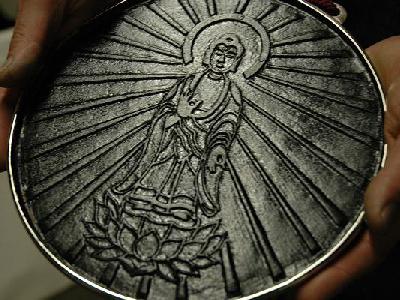|
In one region of Japan, a traditional event called Shamisen-Mochitsuki takes place.
There are many theories as to the derivation of this event depending on the region. The one that is shared throughout Japan has it that the event came about following ceremonies for gods which increased in liveliness as they evolved.
The Kibitsu-jinja Shrine, located in Kibitsu, Okayama-shi, Okayama Prefecture, enshrines the historic deity Kibitsuhikonomikoto (a Shinto god).
Long ago, great actors and performers came from Edo and Kyoto to enact performances of Miyauchi at certain festivals. During the festivals, mochi (sweet rice-cakes) were made and offered to the gods, but this tradition evolved to the Shamisen-mochitsuki, when talented and powerful performers integrated the shamisen (three-stringed instrument) and drums into the events.
The event was once stopped, but in the 1940s it recommenced and continues to this day. During the Shogatsu San-ga-nichi (first 3 days of January), the Kibitsu temple hands out mochi to visitors, pleasing the people who come to the temple.
There are many theories as to the derivation of this event depending on the region. The one that is shared throughout Japan has it that the event came about following ceremonies for gods which increased in liveliness as they evolved.
The Kibitsu-jinja Shrine, located in Kibitsu, Okayama-shi, Okayama Prefecture, enshrines the historic deity Kibitsuhikonomikoto (a Shinto god).
Long ago, great actors and performers came from Edo and Kyoto to enact performances of Miyauchi at certain festivals. During the festivals, mochi (sweet rice-cakes) were made and offered to the gods, but this tradition evolved to the Shamisen-mochitsuki, when talented and powerful performers integrated the shamisen (three-stringed instrument) and drums into the events.
The event was once stopped, but in the 1940s it recommenced and continues to this day. During the Shogatsu San-ga-nichi (first 3 days of January), the Kibitsu temple hands out mochi to visitors, pleasing the people who come to the temple.
| [+ADDRESS] | 
|














